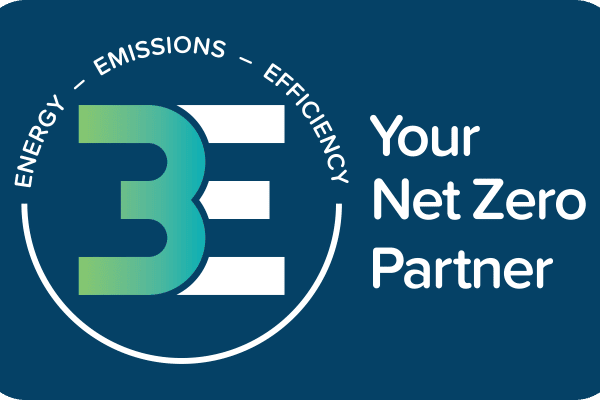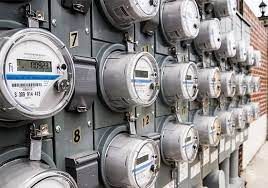When it comes to sustainability terms and climate change, there are numerous ‘buzzwords’ and phrases used to describe organisations or buildings that are very energy efficient and use renewable energy sources to reduce or eliminate emissions. The most popular sustainability term is of course ‘Net Zero Emissions’ which has been widely popularised since the Paris Agreement in 2015 where many governments have formalised their commitment to achieve net zero emissions by 2050.
There are, however, many other terms used that are related to net zero but mean something else entirely different. This has led to much confusion to those not familiar with all the nuanced variations and concepts. In this article, we have compiled definitions and meanings of some of the most commonly used sustainability terms.
11 Sustainability Terms You Probably Didn’t Know The Meaning Of
(click on the links to jump to each section)
| Key term | Equivalent Term (or means the same as… |
|---|---|
| Net Zero / Net Zero Emissions | Carbon Neutral, Climate Neutral |
| Low carbon | Energy Efficiency / A highly energy efficient building or portfolio |
| Zero Carbon | Carbon Zero, Net Zero Carbon |
| Net Zero Energy Building | Net Zero Carbon Building (NZCB), Zero Energy Building (ZEB), Net Zero Building (NZB) |
| Zero Energy Building/Campus/Portfolio | Net Zero Energy Building |
| Net Zero GHG Emissions | – |
| Net Zero Carbon Emissions | Net Zero Carbon |
| Carbon Neutral | Net Zero Emissions |
| Carbon Negative | Climate Positive |
| Carbon Positive | – |
Each of the above terms describe a stage along the sustainability journey. The answer to the question – ‘out of all the sustainability concepts described below, which one should I focus my efforts on?’ – varies depending on where you are now and what your priorities are in the short, medium and long term.
What does Net Zero Emissions mean?
‘Net zero emissions’ refers to achieving an overall balance between greenhouse gas emissions produced and greenhouse gas emissions taken out of the atmosphere. Think of it like a set of scales: producing greenhouse gas emissions tips the scales, and we want to get those scales back into balance with no new greenhouse gas being added to the atmosphere in any given year. Eventually, we will probably need to tip them the other way to repair past harm.
Net zero describes the point in time where humans stop adding to the burden of climate-heating gases in the atmosphere.
The concept of net-zero emissions is akin to “climate neutrality.”
What does Low Carbon mean?
Low carbon means an organisation/building is highly energy efficient and partially powered from on-site and/or off-site renewable energy sources.
Low carbon is often used to describe an economy, organisation or building whose power needs are derived not primarily from carbon-intensive sources such as fossil fuels but from ‘cleaner’ or less carbon-intensive energy sources, such as wind, solar and hydroelectric power. Other forms of clean energy include, for example, wave power and geothermal which are technically feasible but less common than wind or solar. Biofuels can play a role, but they may be viewed as fuel substitutes rather than a clean technology.
What does Net Zero Carbon mean?
On the other hand, an organisation/building that is highly energy efficient and fully powered from renewable energy sources, may be considered a ‘net zero carbon organisation/building’.
What does Zero Carbon mean?
Zero carbon – also known as Carbon Zero – means that zero carbon emissions are being produced from a product/service e.g. zero-carbon electricity could be provided by a 100% renewable energy supplier. This term describes an activity where no carbon was produced in the first place.
What does Net Zero Energy Building mean?
A Net zero-energy building (NZEB), a building with zero net energy consumption, meaning the total amount of energy used by the building on an annual basis is equal to the amount of renewable energy created on the site. Net Zero Energy Building is often interchangeable with Net Zero Carbon Building, Zero Energy Building (ZEB) and Net Zero Building (NZB).
What does Zero Energy Campus / Portfolio / Community, mean?
An energy-efficient campus /portfolio/community where, on a source energy basis, the actual annual delivered energy is less than or equal to the on-site renewable exported energy.
Net Zero Carbon Emissions v Net Zero GHG emissions
Net Zero GHG emissions can be confused with net-zero carbon emissions, but when accurately used, net zero GHG emissions means all greenhouse gas emissions decline to zero, as opposed to just carbon dioxide. This is the same concept as net zero carbon emissions but conveys a net zero emissions target for CO2 and all non-CO2 gases.
Carbon Neutral / Carbon Neutrality
Carbon Neutral is a term used to describe the state of an entity (such as a company, service, product or event), where the carbon emissions caused by them have been balanced out by funding an equivalent amount of carbon savings elsewhere in the world. This is often achieved through funding climate-beneficial projects to make up for the greenhouse gases they emit. Such outside projects used as mitigation for greenhouse gas emissions are commonly called “offsets,” since they’re used to offset the emissions of the person or company who buys them.
Carbon Neutral vs Net Zero Emissions
As previously mentioned, Carbon Neutrality is akin to Net Zero Emissions. While carbon neutrality is considered a synonym for net zero carbon emissions, one key difference, however, is carbon neutrality can be achieved at the domestic level with offsets from other jurisdictions, while net zero emissions does not have the same connotation (though theoretically could be met via offsets).
What does Carbon Negative mean?
The reduction of an entity’s carbon footprint to less than neutral, so that the entity has a net effect of removing carbon dioxide from the atmosphere rather than adding it. This means removing CO₂ from the atmosphere, or sequestering more CO₂ than is emitted. This might include a bioenergy process with carbon capture and storage. Becoming carbon negative requires a company, sector or country to remove more CO2 from the atmosphere than it emits – see also Carbon Positive.
What does Climate Positive mean?
Carbon Negative and Climate Positive are interchangeable terms: Climate positive means that an activity goes beyond achieving net zero carbon emissions to actually create an environmental benefit by removing additional carbon dioxide from the atmosphere.
The benefit of climate positive initiatives is the spillover benefits they create for other people, companies, or localities that may not have the means or initiative to reduce their own carbon footprints. Ideally, carbon neutrality will become the eventual standard across the board, climate positive initiatives can, in the meantime, help pick up some of the slack.
What does Carbon Positive mean?
A ‘carbon positive’ building takes this a step further, producing more energy than it needs and feeding that energy back into the grid.
Carbon positive moves beyond carbon zero by making additional ‘positive’ or ‘net export’ contributions by producing more energy on site than the building requires and feeding it back to the grid. Carbon positive projects can make significant contributions by helping to address the carbon intensity and damaging impacts of past building practices and lifestyles, and by offsetting situations where carbon zero buildings are not possible.
Carbon positive is mainly a marketing term, and understandably confusing because it is sometimes how organisations describe ‘carbon negative’ and ‘climate positive’. Carbon Negative sounds bad even though it’s the most altruistic of all sustainability concepts and terms.
Which sustainability term/concept and target should you focus on?
Each of the above terms describe a stage along the sustainability journey. The answer to the question – ‘out of all the sustainability concepts described above, which one should I focus my efforts on?’ – varies depending on where you are now and what your priorities are in the short, medium and long term.
The short-term target may be to achieve ‘Low Carbon’ at first; and then the medium-term target may be to achieve Net Zero Energy or even Carbon Neutral Status – and then a longer-term strategy may be to work towards achieving Net Zero Emissions or Carbon Positive.
Governments have placed a significant emphasis on achieving Net Zero Emissions by 2050 – which is about achieving a balance of naturally occurring greenhouse gases vs GHG caused by human and industrial activity. But we can’t stop there – there needs to be movement ‘beyond net zero’ which ultimately means achieving carbon positive or climate positive outcomes across the board.
Whatever your sustainability target is based on – low carbon, net zero energy or net zero emissions – you can rely on Ecosave’s expertise and end-to-end solutions
If you’d like to discuss your organisation’s energy and sustainability needs and see how the Energy Efficiency & Sustainability Experts at Ecosave can assist you – click here to book a Net Zero Strategy Consultation today!
Connect with the Net Zero Experts
References
- Budinis, S. (2020, January 31). What is the difference between carbon neutral and carbon negative. Retrieved from IEA.org: https://www.iea.org/commentaries/going-carbon-negative-what-are-the-technology-options
- Carbon Negative. (2020, September 3). Retrieved from Edie.net: https://www.edie.net/definition/Carbon-negative/21#:~:text=DEFINITION%3A%20The%20reduction%20of%20an,atmosphere%20rather%20than%20adding%20it.
- Carbonfootprint.com. (2020, September 3). Carbon Neutrality. Retrieved from Carbonfootprint.com: https://www.carbonfootprint.com/carbonneutrality.html#:~:text=Carbon%20Neutral%20is%20a%20term,savings%20elsewhere%20in%20the%20world.
- CitySwitch.net.au. (2020, September 3). Why Carbon Positive? Retrieved from Cityswitch.net.au: https://cityswitch.net.au/Why-carbon-positive
- ClimateCouncil.org.au. (2020, July 9). What does net zero emissions mean? Retrieved from Climate Council: https://www.climatecouncil.org.au/resources/what-does-net-zero-emissions-mean/
- Energy, U. D.-E. (2015, September). A Common Definition for Zero Energy Buildings. Retrieved from Energy.gov: https://www.energy.gov/sites/prod/files/2015/09/f26/A%20Common%20Definition%20for%20Zero%20Energy%20Buildings.pdf
- Energy.gov. (2020, September 3). Zero Energy Buildings. Retrieved from Energy.gov: https://www.energy.gov/eere/buildings/zero-energy-buildings
- Fastcompany.com. (n.d.). Climate positive, carbon neutral, carbon negative: what do they mean? Retrieved from fastcompany.com: https://www.fastcompany.com/40583176/climate-positive-carbon-neutral-carbon-negative-what-do-they-mean#:~:text=Carbon%20neutral%20means%20that%20an,carbon%20dioxide%20from%20the%20atmosphere.
- Juliesbicycle.com. (2020, September 3). What’s the difference between zero carbon and carbon neutral? Retrieved from juliesbicycle.com: https://juliesbicycle.com/faqs/faq-zerocarbon/
- Kcet.org. (2020, September 3). What does ‘Carbon-Neutral’ really mean? Retrieved from Kcet.org: https://www.kcet.org/redefine/what-does-carbon-neutral-really-mean
- Linnenluecke, P. M. (2020, September 3). What is a low-carbon economy? Retrieved from Macquarie University – The Lighthouse: https://lighthouse.mq.edu.au/article/please-explain/march-2019/what-is-a-low-carbon-ecomony#:~:text=A%20low%2Dcarbon%20economy%20simply,wind%2C%20solar%20and%20hydroelectric%20power.
- Net-zero-vs-zero-carbon-what-is-it-and-how-do-we-reach-it. (2019, November 20). Retrieved from greennetworkenergy.co.uk: https://greennetworkenergy.co.uk/blog/net-zero-vs-zero-carbon-what-is-it-and-how-do-we-reach-it/
- Wikipedia.org. (2020, September 3). Zero-energy building. Retrieved from Wikipedia.org: https://en.wikipedia.org/wiki/Zero-energy_building#:~:text=A%20zero%2Denergy%20building%20(ZE,on%20the%20site%2C%20or%20in
- Wri.org. (2020, September 3). What does net zero emissions mean? 6 common questions answered. Retrieved from Wri.org: https://www.wri.org/blog/2019/09/what-does-net-zero-emissions-mean-6-common-questions-answered
You may also be interested in reading:






